
Concave is the curvature in the middle of the skateboard, and it affects the feel of a board in a few ways:

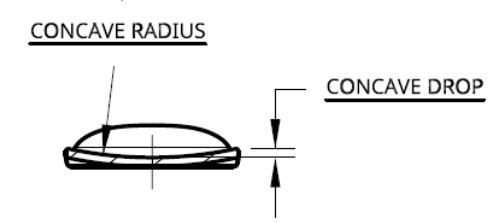
1) Leverage: Concave can provide leverage (torque) for flip tricks, carving, and sliding.
As distance from an axis of rotation increases, torque increases (Torque = Force x Distance). This means it takes less force to flip a board with more concave than one with less (so flipping is easier / takes less effort).
If you apply an angled force (like you might apply when you kickflip) at the edge of a board with concave, you’ll have more torque than if you applied the same force on an identical board with no concave (Fig. 1). I’ll avoid the full physics lesson because there are many places you can learn about torque online, but basically, if I superimpose the force vectors and center of masses (axis of rotation), you can see that the orange (no concave) board has a smaller vertical distance (y2) than the blue (concave) board (y1) (Fig. 2). (Technically, the center of mass on the orange board would be slightly lower due to the lack of concave, so the difference between y1 and y2 is actually smaller than shown).
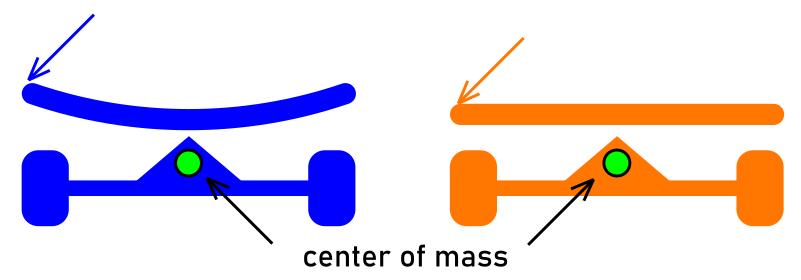
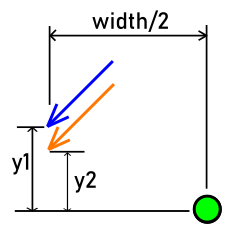
2) Wheel clearance: as you increase the concave on a board, you increase the gap between the wheels and the bottom of the deck, reducing your chance of getting wheelbite. (The term “wheel flares” refers to concave that increases only above the wheels.)
3) Stiffness: as you increase concave, stiffness increases. Think about thin crust pizza (New York style) – you typically need to fold it, or else it just flops over.
4) Pockets: concave creates pockets and features in your board which may help with proprioception and grip.
-----
Skateboard/longboard concave can take a variety of forms, which include (but are not limited to):
Radial: rounded, like a section of a circle. SK8CAD currently only enables radial concave, though you can contact us to get other designs.
Tub: flat in the middle, and angled on the sides.
Progressive: mellow curvature in the middle, then progressively steeper at the rails.
“W”: bumped up in the middle, more popular with downhill longboarding for the foot feel it provides.
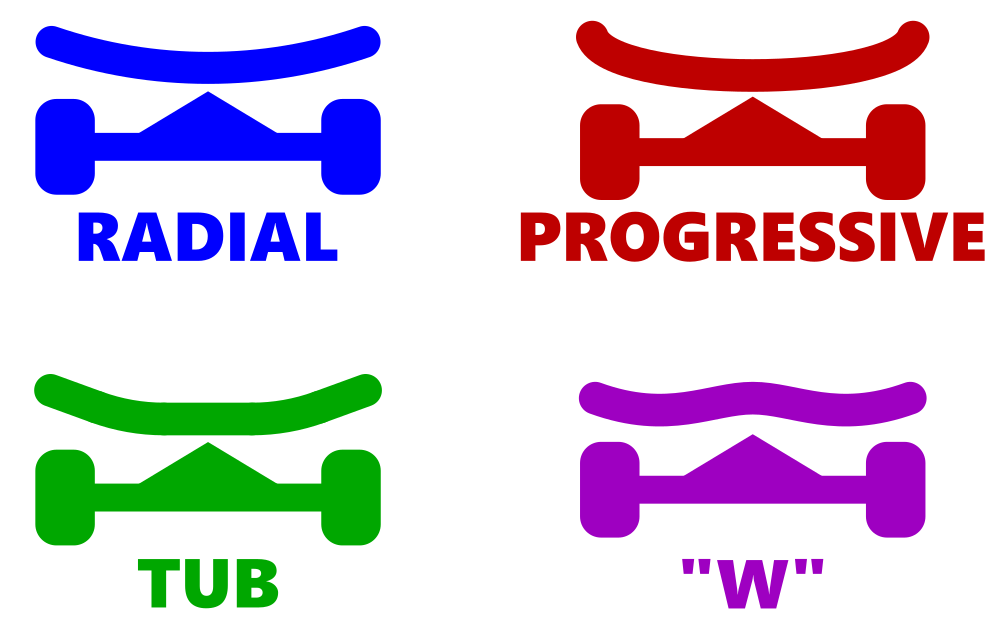
No concave (flat) also has benefits – the board will flex more (providing a smoother ride) and it can be helpful with footwork tricks (little/no concave is popular among freestyle skateboarders and longboard dancers). If you're trying to decide which type of concave is best for you, try out different styles and see what you like the feel of the most. If you can't try out different concave styles, start with radial, as it's the simplest to play around with since it has minimal design variables (just concave radius).
-----
In addition to the styles of concave mentioned above, there can also be curvature along the length of a board:
Camber: the board bows up in the middle, providing more space below the board to flex – camber can be found on cruising/dancing boards where the riders want to carve and flow on a soft ride.
Rocker: the board bows down in the middle, lowering the center of gravity.
Drop deck: the board has a lowered platform to lower the center of gravity, which is popular on long distance push boards and sliding longboards where the kicks aren’t used (otherwise rocker may be better suited).
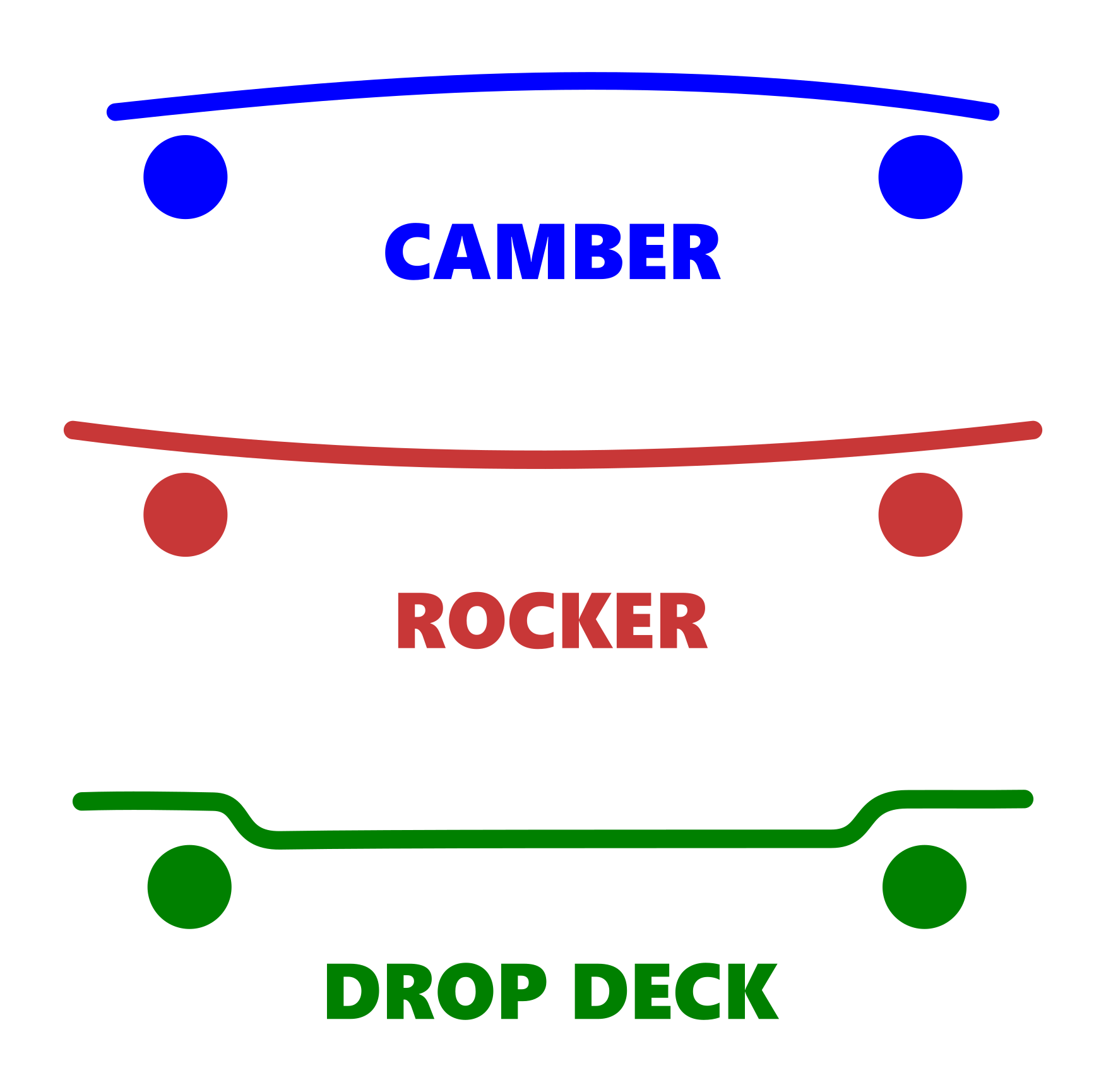
-----
Lastly, here are some ways to use your board's concave design to troubleshoot your skating:
(Note, these issues can be resolved in other ways aside from concave design.)
Getting wheelbite? Get a board with steeper concave or wheel flares.
Or, use risers, smaller wheels, taller trucks, or tighten your trucks.
Shove-its won’t stay flat? Get a board with mellow concave.
Or, use wider trucks, mellower kicks, smaller wheels, or lower trucks.
Can't get full flip trick rotation? Get a board with more concave.
Or, use narrower trucks, smaller wheels, or lower trucks. (Slightly more grippy grip tape may help, too.)
Board feels too stiff? Get a mellow/flat board (perhaps with camber).
Or, get a board made with more flexible materials, like bamboo or birch, or fewer plies (like 6-ply, though strength will be reduced).
Board feels too flexible? Get a board with more concave.
Or, get a board made with more rigid materials, like epoxy, or more plies (like 8-ply or 9-ply).
Uncomfortable pushing long distances? Get a drop deck or a board with rocker.
Or, use softer and bigger wheels, wear more comfortable shoes, stretch more, learn to push every way (regular, mongo, switch, and switch mongo), or get an electric skateboard.
Interested in learning more about skateboard/longboard design and construction? Check out the Open Source Skateboards Virtual Workshop!